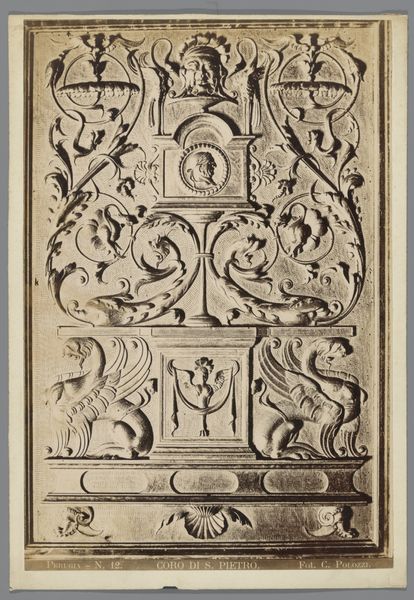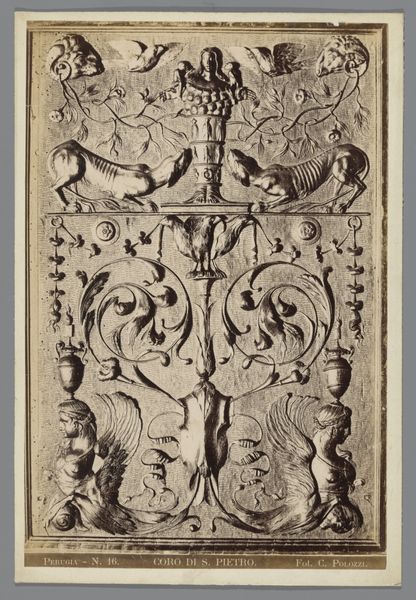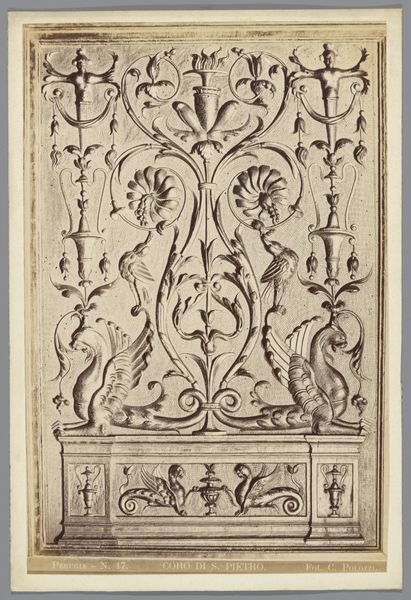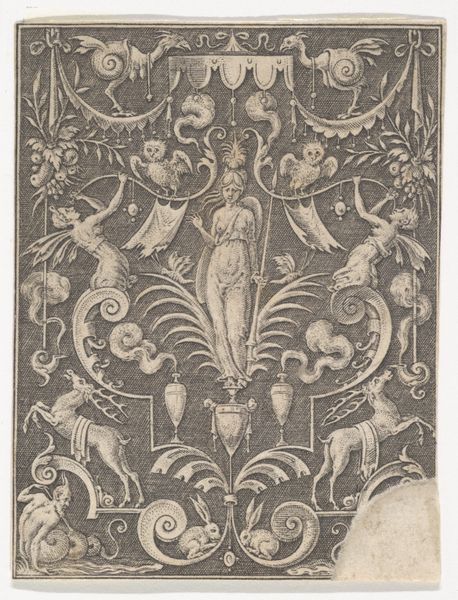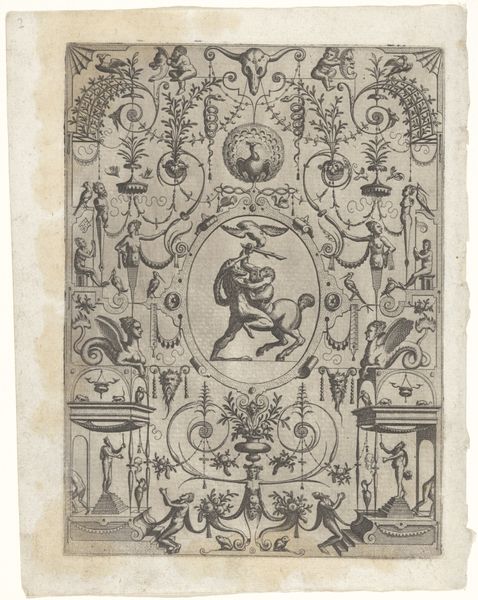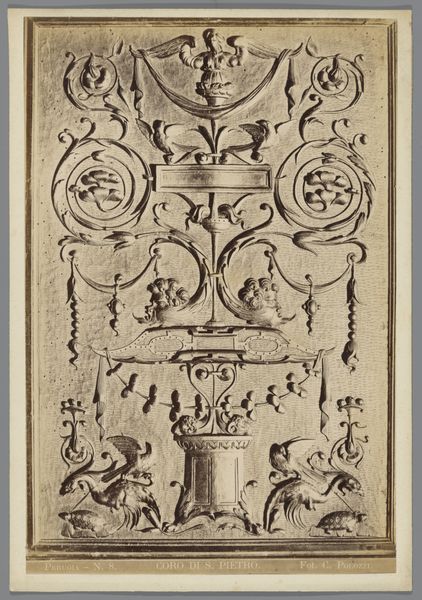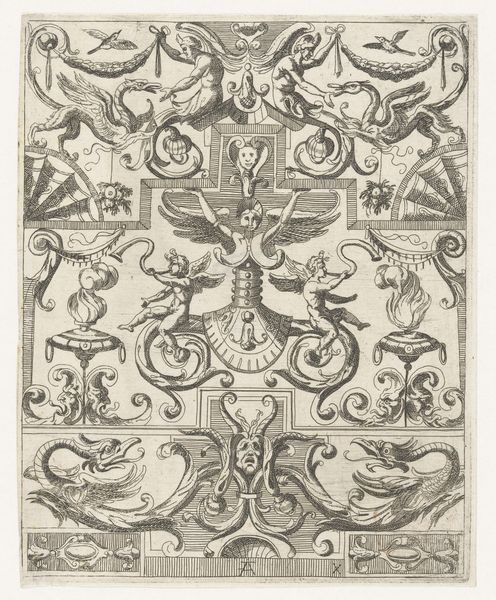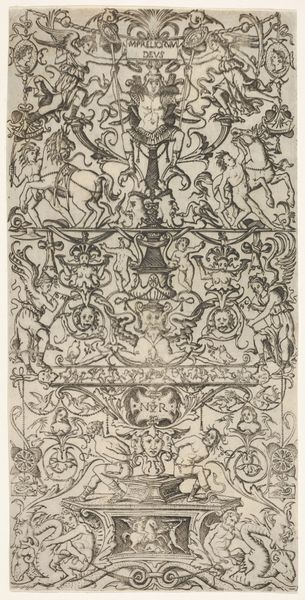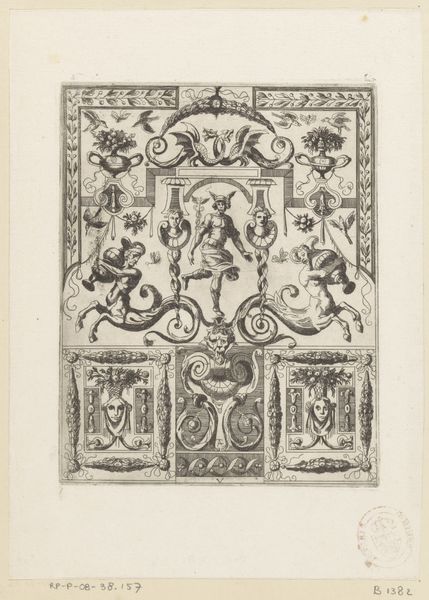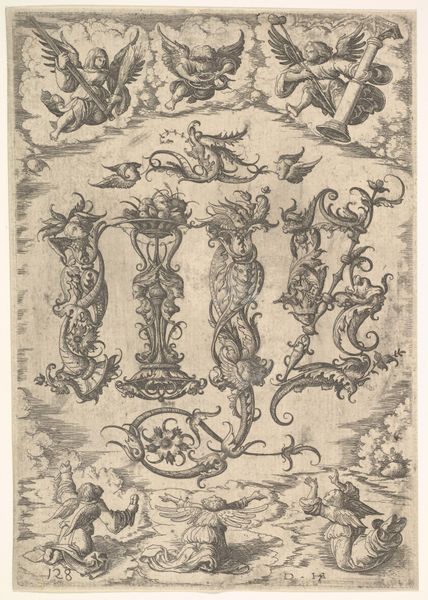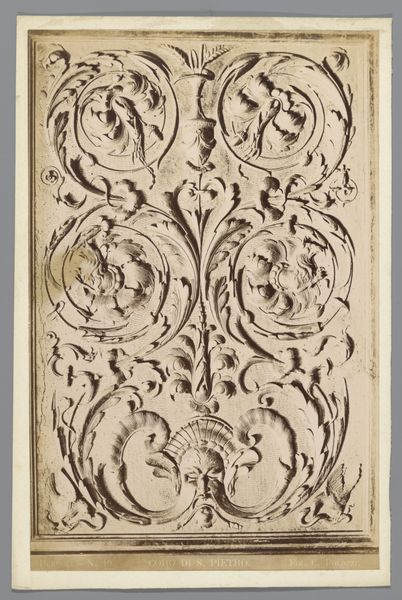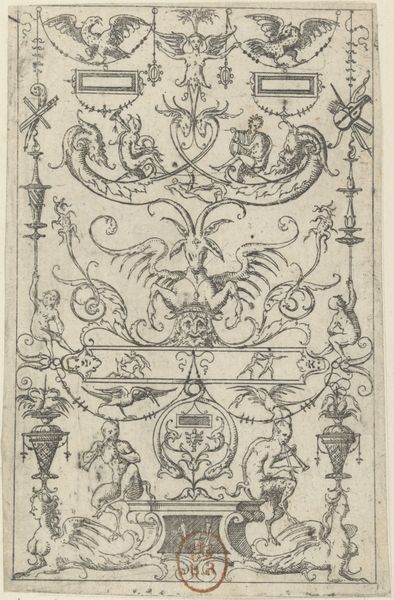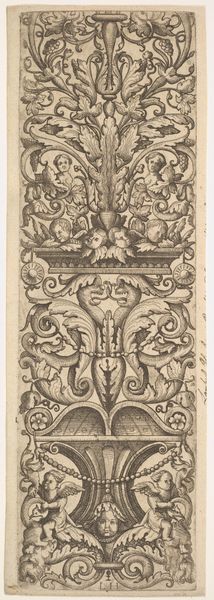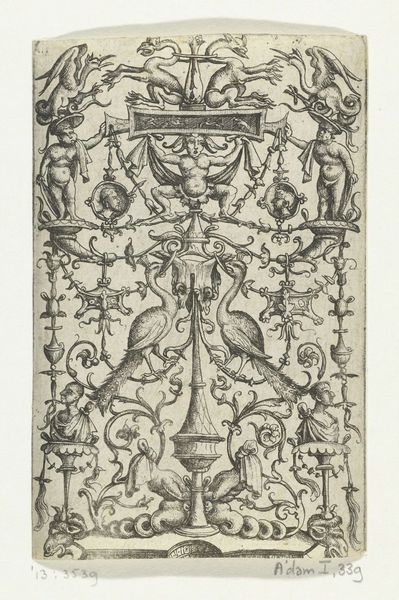
Dimensions: height 254 mm, width 165 mm, height 270 mm, width 177 mm
Copyright: Rijks Museum: Open Domain
Curator: Oh, it's intricate, isn't it? Almost overwhelmingly so. It feels like tumbling down a rabbit hole of baroque exuberance. Editor: Absolutely. We’re looking at an engraving, dating back to 1870, by C. Polozzi entitled “Relief in de San Pietro te Perugia.” It seems to depict some ornamentation, maybe a panel of a choir stall? It’s positively brimming with allegorical elements and stylized forms typical of Baroque design. Curator: Stylized is an understatement! Look at those cherubs cavorting with...are those winged lion-sphinxes? And that central mask...there's almost a comic, exaggerated quality to it all. Editor: Right, these prints were produced as design exemplars. Let’s think about the baroque era and the Catholic Church. Religious orders really invested in the potential for art and architecture to emotionally affect their members. Do you feel that impact? Curator: I feel a sense of swirling...perhaps manipulated ecstasy! There's so much visual information here, you can get lost in it. Those winged creatures certainly aren't subtle. They have a real commanding, sensual presence... it almost drowns out whatever deeper meaning they might be hinting at. Editor: Interesting point. Let's dig a little deeper. These creatures pull from Greco-Roman imagery and mythological hybridity; we should also observe this work in relationship to similar decorative details of the early 1870s when rising global powers leveraged imperial forms through architectural power. Polozzi clearly draws upon these aesthetics for an intended outcome. Curator: Yes! These are strange figures in strange times, holding together older, symbolic traditions. I would argue this particular etching is just such a piece. It offers this wonderful, almost overwhelming sense of theatricality – it's ornamentation for the sake of itself, really. Editor: Ornamentation for power's sake perhaps. This is clearly not about quiet contemplation. I find it quite fascinating how historical designs become repurposed depending on socio-political desires. Curator: That is something to ponder! It has been delightful peeling back these complex ornamental layers with you. Editor: Likewise! It has also helped us connect visual history with a more just future.
Comments
No comments
Be the first to comment and join the conversation on the ultimate creative platform.
